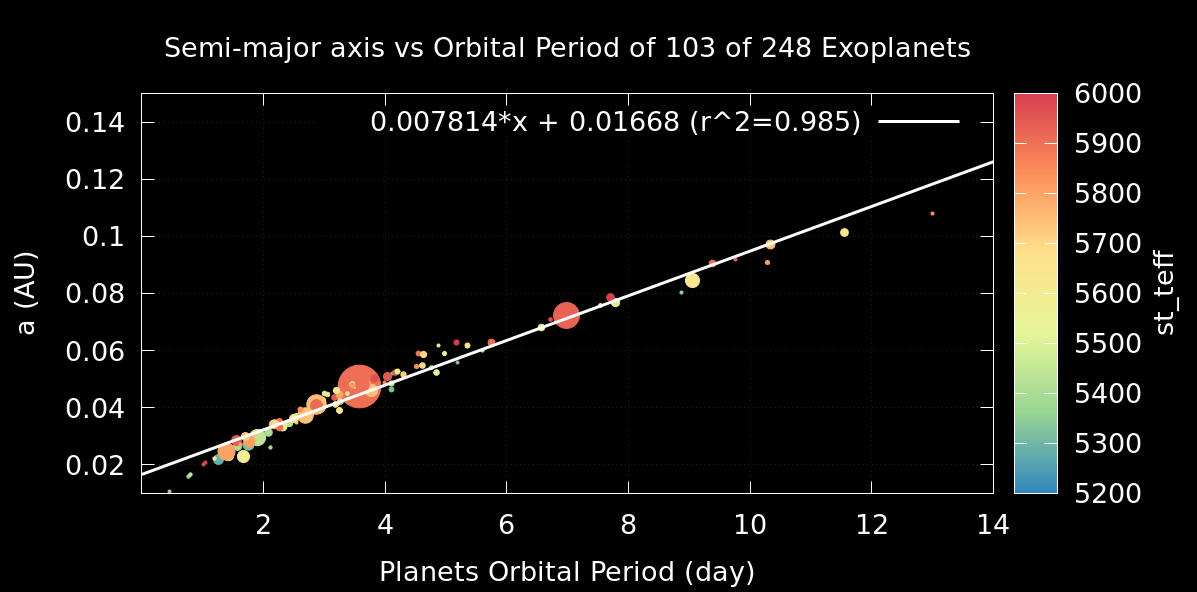On the Physical Properties of G-Type Main Sequence Stars
G-Type Main Sequence Stars
DOI:
https://doi.org/10.14331/ijfps.2023.330159Keywords:
Steller Classifications, G-Type main sequence stars, New discovered exoplanetsAbstract
This research focuses on the classification and properties of G-Type main sequence stars. It discusses the historical development of star classification systems and their importance in understanding stellar evolution, composition, and galactic structures. The paper also examines the mass-radius and mass-luminosity relationships of stars, highlighting the strong positive correlations between mass and radius, as well as mass and luminosity. The findings suggest that more massive stars tend to be larger and more luminous. However, further analysis is needed to explore the underlying relationships between these variables.
Downloads
References
Abt, H. A., & Bidelman, W. P. J. A. J., vol. 158, p. (1969). Spectral classification of A-type spectroscopic binaries. 158, 1091.
Bailer-Jones, C. A. J. a. p. a.-p. (2001). Automated stellar classification for large surveys: a review of methods and results.
Brinchmann, J., Charlot, S., White, S. D., Tremonti, C., Kauffmann, G., Heckman, T., & Brinkmann, J. J. M. n. o. t. r. a. s. (2004). The physical properties of star-forming galaxies in the low-redshift Universe. 351(4), 1151-1179.
Burnham, R. (2013). Burnham's Celestial Handbook, Volume One: An Observer's Guide to the Universe Beyond the Solar System (Vol. 1): Courier Corporation.
Hernández, J. G., Delgado-Mena, E., Sousa, S., Israelian, G., Santos, N., Adibekyan, V. Z., . . . Astrophysics. (2013). Searching for the signatures of terrestrial planets in F-, G-type main-sequence stars. 552, A6.
Hertzsprung, E. (1947). Catalogue de 3259 étoiles dans les Pléiades. Annalen van de Sterrewacht te Leiden, vol. 19, pp. A1-A89, 19, A1-A89.
Inglis, M. (2015). The Hertzsprung-Russell Diagram. In Astrophysics Is Easy! (pp. 77-84): Springer.
Institute, N. E. S. (2020). Planetary Systems Table.In: IPA.
Jaschek, C., & Jaschek, M. (1990). The classification of stars: Cambridge university press.
Morgan, W. W., Keenan, P. C., & Kellman, E. (1943). An atlas of stellar spectra. In: Chicago: University of Chicago Press.
Morgan, W. W., Keenan, P. J. A. R. o. A., & Astrophysics. (1973). Spectral classification. 11(1), 29-50.
Percy, J. R. (2007). Understanding variable stars: Cambridge University Press.
Pickering, E. C. J. A. o. H. C. O., vol. 27, pp. 1-388. (1890). The Draper Catalogue of stellar spectra photographed with the 8-inch Bache telescope as a part of the Henry Draper memorial. 27, 1-388.
Wilson, M. W., Childs, K. P., & Edith, K. (1943). An atlas of stellar spectra, with an outline of spectral classification.

Published
How to Cite
Issue
Section
License
Copyright (c) 2023 International Journal of Fundamental Physical Sciences

This work is licensed under a Creative Commons Attribution 4.0 International License.










